Birding Discovery Days 2021 – Review of the Year and our Highlights
Against all the odds of the pandemic it has been a brilliant year for our trips with some memorable encounters on our Birding Discovery Days, Goshawk Safaris and Nightjar Safaris. We took a big hit in 2020 with many trips postponed but at least it meant all our trips were fully booked in 2021! More people than ever before wanted to discover Yorkshire’s wild secrets and we were right here with a crack team of guides brimming with enthusiasm to deliver the experiences. This was an extra special year for us because we were celebrating our tenth anniversary. Steve and I started YCN in May 2011.

The YCN Birding Discovery Days Team. Mark, Margaret, Jono, Richard and John
I asked each of our birding guides to choose their favourite moments or overall experiences from the trips they led and write us a short account. We start with Margaret who led our Forest and River Days in the spring and end with my mine. Read on to enjoy our tales and find out how many species our combined trips logged in 2021…
Forest & River Birding Day by Margaret Boyd
After each birding day, I always ask everyone what has been their favourite bird and what has been their best bird experience from the day. There are some typical forest birds that some clients are eager to add to their year or life lists or just to have a chance to really watch and observe alongside other like-minded people; Goshawk, Common Crossbill, Tree Pipit, Marsh Tit and many more. Seeing these birds for the first time, or for the first time in a long time, can be the highlight of a trip.
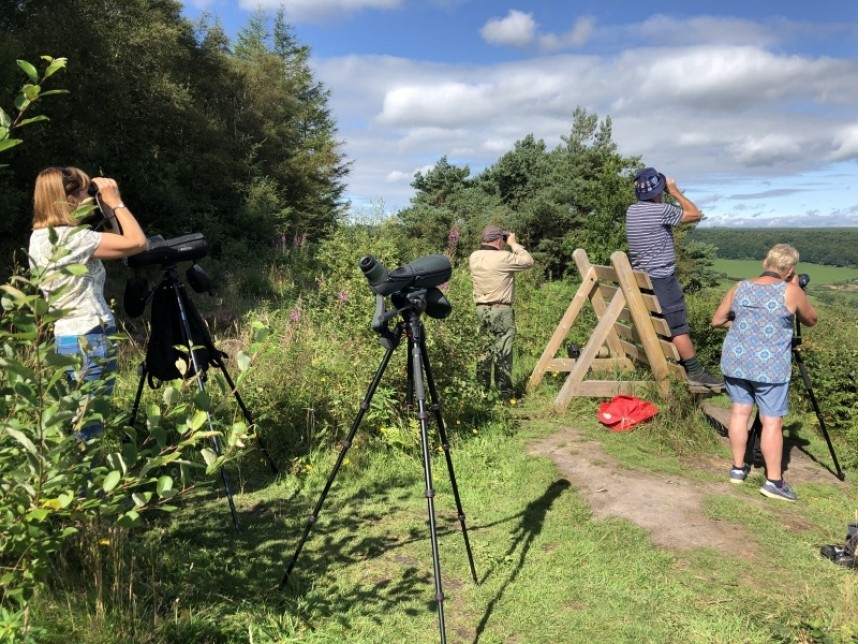
Forest and River Birding Day with Margaret Boyd
One such sighting was of a Honey Buzzard. We were scanning the “big” sky above the forest and had already picked up on a couple of Goshawks, their distinctive bulk defining their identification. Goshawks are always a thrill but in the early summer months they can be harder to see so a true bonus for the day but it was the emergence of another bird of prey on the horizon that really made our hearts start to pound. Starting quite a distance from us and gradually getting closer we soon realised that we weren’t looking at a buzzard type of raptor. We soon noted the wings were held drooped rather than flat. It continued its approach, then suddenly the classic wing clap took us all by surprise, only once but there for us all to take in. Perhaps its intended partner was close by or flying in the other direction since the bird then quickly flew out of our sight. Some experiences are short but very memorable, however many times you see them.
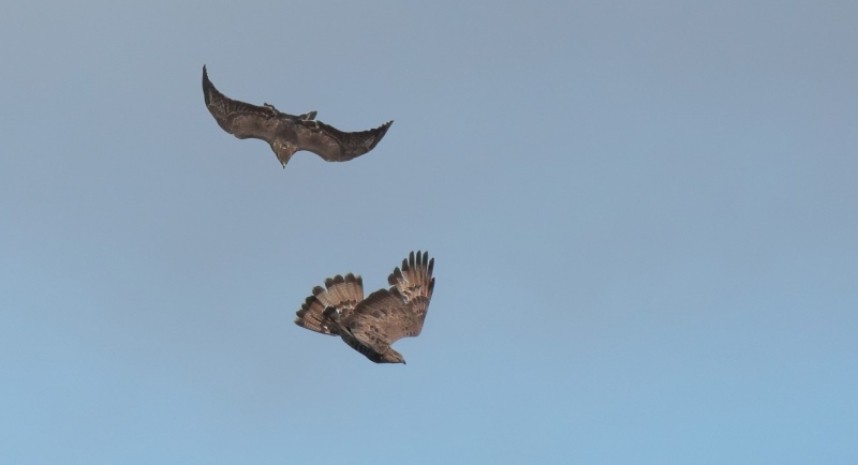
Honey Buzzard and Common Buzzard in the Great Yorkshire Forest 2019 © Richard Baines
Other birds of the day can be on show for nearly the whole afternoon, as was the case with one particular Dipper on the river Derwent in Troutsdale. Made all the better as some of the morning birds in the forest, on a hot day in the spring, had been fairly elusive; Garden Warblers and Blackcaps teasing us and a beautiful Turtle Dove picking seeds in between the lines of tiny trees in the forest’s nursery, continually being lost in amongst the shallow furrows. Even the showy Crossbills, usually birds that sit in full view at the top of the pines, had been flitting around from tree to tree, making them hard to focus on. The Dipper on the other hand delighted everyone by perching, swimming, preening and feeding in full view across the water, only about 20m away. Reluctantly, but with cameras full of photos, we left the Dipper and caught up with a pair of Grey Wagtails, another classic river bird and then just before the we ended the day a Spotted Flycatcher appeared. A great end to a memorable day.
Upland Birding Day by John McLoughlin
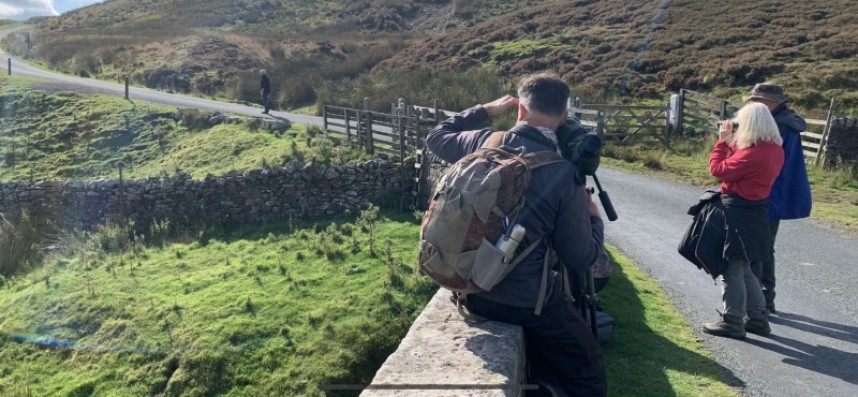
Birding the Uplands with YCN guide John McLoughlin
It was toward the end of the spring tours in Upper Swaledale. The guiding season had been going very well and the Ring Ouzels had been having a good year. At one point in early June six males were contesting territories in one valley. What looked like first summer males were performing as young pretenders fighting for the singing posts held by the breeding adults. The dry repetitive songs of the ouzels echoed around the head of the valley.
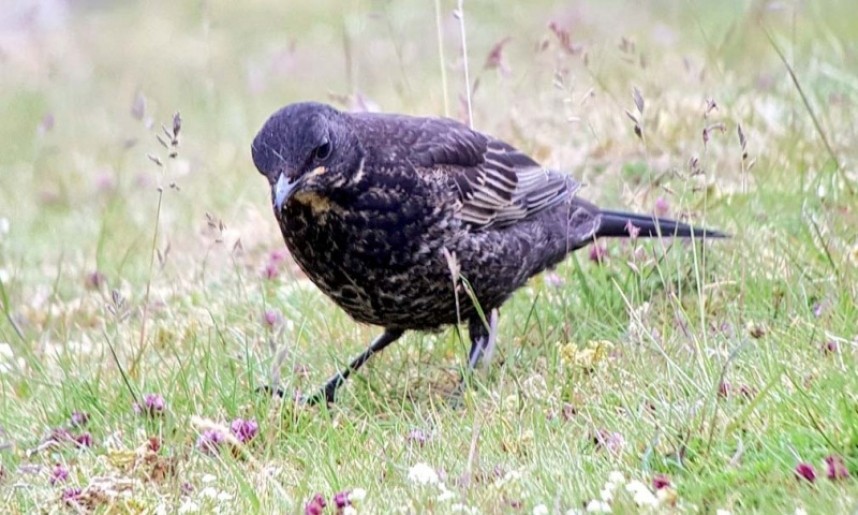
Juvenile Ring Ouzel Yorkshire Dales Upland Birding Days
Around the ruins of the old lead mines, we stumbled across some fledged juveniles. Fully grown but seemingly without a care in the world. These juveniles hopped across the short turf in front of the group. They had very subtle features with fine white fringes to the body feathers. The distinctive white wing flashes yet to develop. Sometimes showing people the target bird can be fraught with difficulty. The weather can be against you or the birds won't come out to play. However on this day everything fell in place, all of the separate experiences from previous trips exploded into one big Ring Ouzel circus!
Autumn Migration Special Birding Day by Mark Pearson
There are just too many highlights from this year to mention, although the best thing was being able to guide through the seasons relatively unaffected by the pandemic - keeping it local is so important on so many levels!

Red-flanked Bluetail at Flamborough, what a great find! © Mark Pearson
One particular feature of my Autumn Migration Days was our almost ridiculous rarity strike-rate... we don't promise rarities of course, and they're not the main focus, but they're always a great bonus - and we seemed to trip over them on all of our Flamborough tours! Our groups finds included Red-flanked Bluetail and Glossy Ibis, we were on site for a clifftop Taiga Flycatcher, the Black-browed Albatross reappeared especially for us... and that's not including all the scarcities and - most importantly - first-hand migration experiences we enjoyed. Roll on '22!
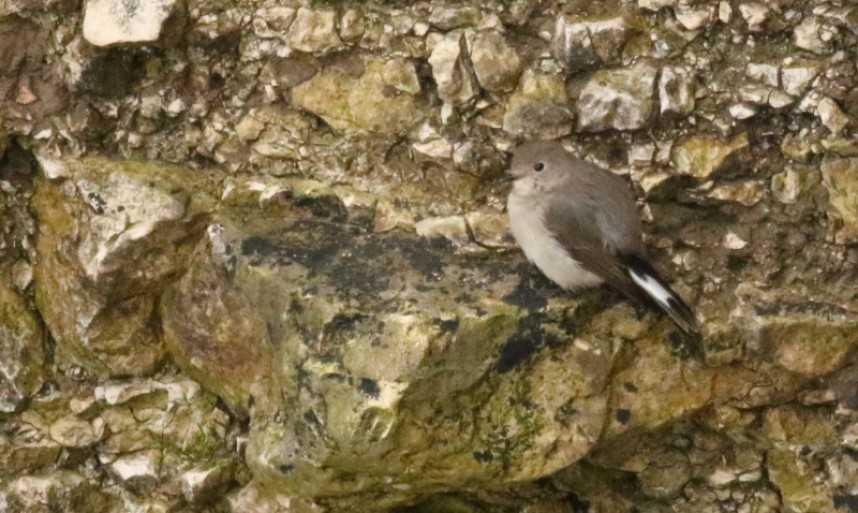
Taiga Flycatcher Flamborough October © Richard Baines
Winter Wetland Birding Day by Jono Leadley
Every YCN tour delivers wonderful wildlife encounters and I have many great memories to choose from. Recently, I have enjoyed showing people the wealth of wildfowl and other wildlife that spends the winter in and around the Lower Derwent Valley (LDV) near York. On our first tour, we had struggled a little to find the large flocks of ducks and geese we had hoped for. This seemed to be due to the low level of flooding in the valley, meaning many of the birds had not arrived yet. Nevertheless, we persevered and were rewarded with a range of species including Marsh Harrier, Ruff and Pintail. Right at the end of the day, we were enjoying lovely views of a flock of Wigeon loafing on the riverbank, when I suddenly noticed two heads appear mid-channel.
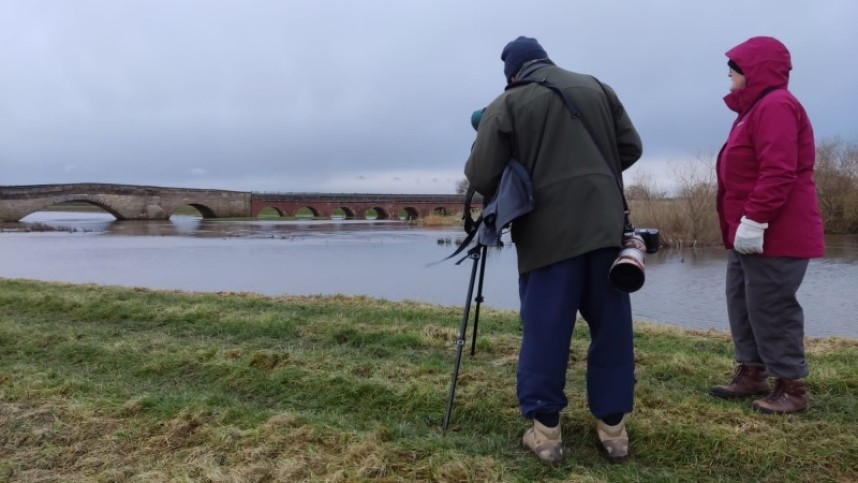
Otter watching on the River Derwent on Jono's Wetland Day December 2021
Otters! I quickly got the group on to these wonderful mammals and we watched them fishing for several minutes. This was such good fortune, but more was to come. We walked nearer to where they were feeding, but they had disappeared. One of the clients suddenly tapped my on the shoulder and without a word, pointed at the edge of the river a few metres in front of us. There, among the emergent reeds was one of the Otters, watching us intently. It was so close, we heard it exhale before it gracefully sank under the water and swam away. Fabulous!
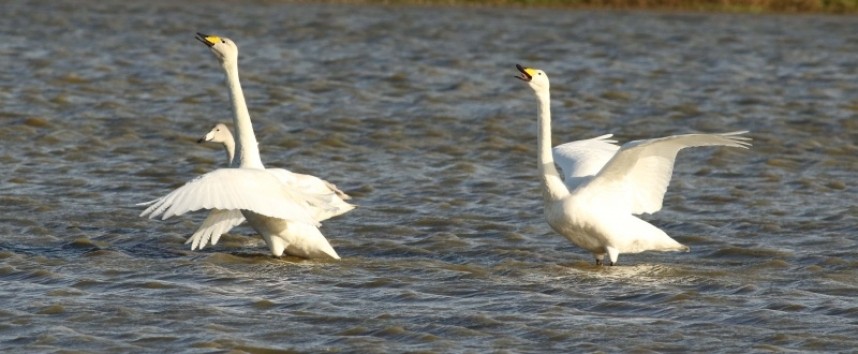
Whooper Swans © Richard Baines
A few days later, I was out on the Derwent again leading another trip and whilst we didn't see the Otters again, the hoped-for wildfowl had appeared in droves. Creeping up on to the flood bank, a majestic herd of Icelandic Whooper Swans bugled and displayed together no more than 25 metres away, while flocks of Wigeon and Teal thronged the edges of the river. It was a wonderful sight and we watched in awe as a hunting Marsh Harrier powered through the flock, causing panic among the ducks. She dived in to try and grab an unlucky duck, but sadly for her, left empty taloned, leaving us breathless with excitement. Another typical day in the fabulous LDV!
Nightjar Safari by Richard Baines
The weather in the spring of 2021 was rubbish! I remember being shocked at how different it was compared to the barmy days of May 2020. Almost every morning of April and May seemed to start with a frost. Every day I was thinking about how our migrant birds would cope. A week later we would be starting our Nightjar Safaris. These evening visits are one of my highlights of the year and we always start with several reconnaissance visits to make sure these amazing birds are back on territory. It was no surprise therefore when we found none on site. Despite several sightings in the wider forest our patch was deadly quiet. The churring of Nightjars had been replaced by a worried ‘eek’ from me!
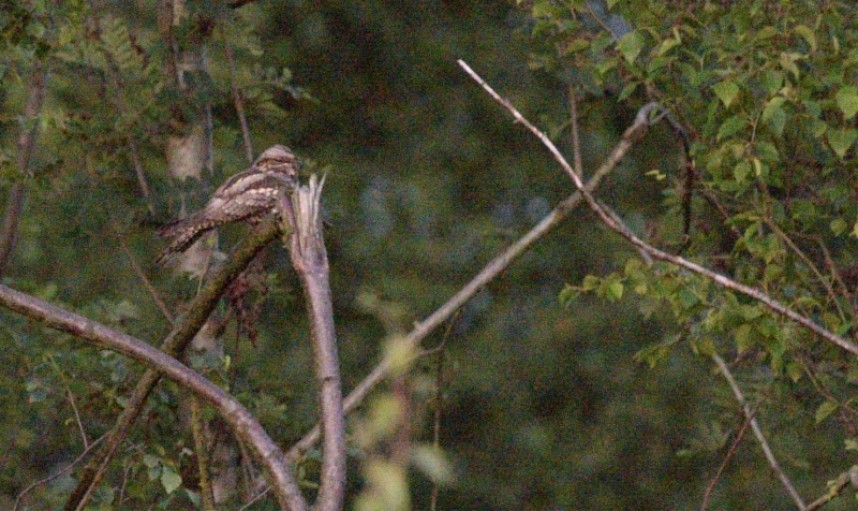
European Nightjar © Adrian Hotson from our YCN Nightjar Safari 2021
A week later our first safari drew a blank, the second one was a success but there weren’t as many birds on site as we were used to. On the third date the rain arrived. It was late afternoon and despite a clear forecast the forest was being soaked. At this point I nearly changed career and booked a plumbing course! Thankfully I made the right choice, I rang my guests and changed our safari venue. Further west there was no rain and hopefully more birds. As we arrived at the new site, I was full of hope as the micro climate seemed just right. I gathered the group together at a spot I calculated should be just right for good views but I was still hoping my instinct was right. As the light dropped, I said ‘one of the birds we should lookout for is Woodcock’ I had only just finished the last word when a flight of four male Woodcocks came whistling over our heads like fully laden bombers! Wow that was a good start. Twenty minutes later the first Nightjar started churring only a few meters away, the noise pulsing around our heads. We all stood dead still, our ears on high alert! As if by magic it then flew up from its roost circled our group in slow motion before landing on a nearby branch in full view of everyone. In all my time guiding I don’t think I have ever been more excited and relieved!
The Big Species Total
Whether we like to admit it or not we all love to know how many species we have seen in a day or a year or in our life. Personally, I love the pure fun of a list but I also really enjoy learning about how diverse an area is for birds or other wildlife based on a species list. There is no doubt we are blessed with a wide variety of habitats in Yorkshire. From coastal lagoons to towering cliffs, heather moorland, mixed and ancient forest, floodplain wetlands and one of the biggest estuaries in the UK. These amazing landscapes all helped attract an impressive total of 205 species to our one-day trips in 2021.
Sharing these birds and other wildlife with our guests has been such a thrill for our team this year. We wish to thank everyone who booked with us and made it such a special year. If you didn’t manage to join us in 2021 register for our newsletter to get up to the minute news of new trips and dates. We have lots of trips already on our web site but there are more to come. 2022 promises to be even better than this year!
Richard Baines
YCN Director and Wildlife Guide



 Back to Blog
Back to Blog
